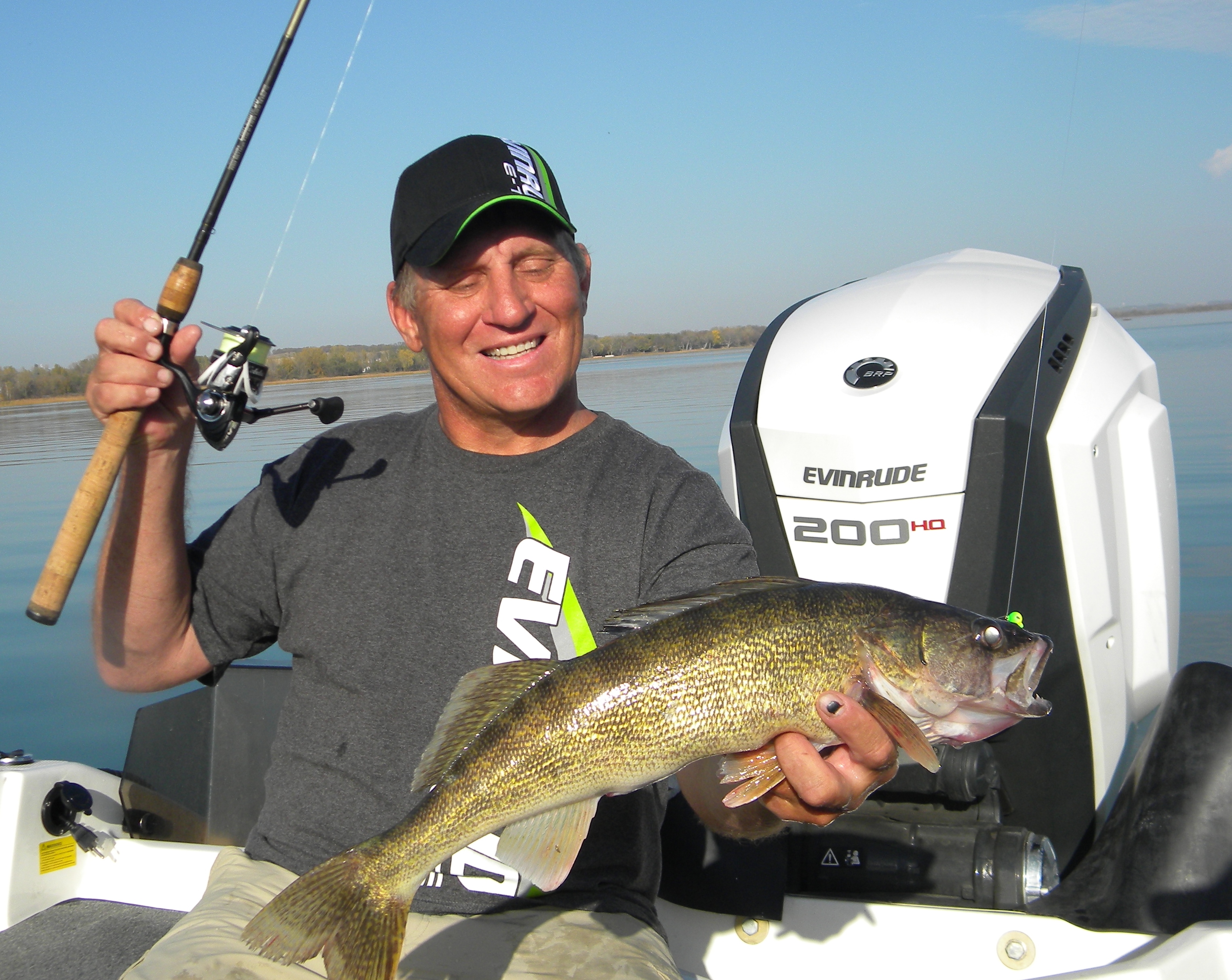
By Mike Frisch
Finally, the opening day for the gamefish season, aka “the walleye opener” is here! This is the day many of us have been waiting for since putting the boats away last fall. Now, however, anticipation gives way to action, and having a good game plan for the opening day can mean the difference between success and frustration.
The first consideration when formulating my opening day walleye fishing plan revolves around lake choice. Water temperature can be a big key to fishing success during this time and, for that reason, I often like to start on a small, shallow lake that warms quickly.
Not just any small, shallow lake will do, however. I like to pick a lake where I have had recent fishing success on. For example, the lakes where I caught good numbers of walleyes last fall and again last winter are lakes where I will probably fish on opening day.
Many small, shallow lakes are somewhat dishpan in shape, lacking the classic underwater points and humps we often associate with walleye-holding structures. For that reason, I like to look along the first drop-off where the shoreline flat dumps into the lake’s basin. Specifically, I’m looking for subtle differences, maybe small turns or points on the drop-off, areas where the harder bottom is present, or small areas of emerging weeds. The early season search in these areas often occurs in waters 10 feet deep and shallower.
One way to find these areas is to cruise along the drop-off, keeping an eye on quality sonar for irregularities along the drop-off, and for the presence of weeds or bottom composition changes. Recently, I have been using the CHIRP DownVision on my Raymarine sonar units as this technology is great for showing photo-like images of the bottom, helping me find the subtle differences along these drop-offs that hold walleyes. Combining the use of the CHIRP SideVision in another screen, allows me to also “look” up on the flat for rocks, weeds, and depressions, along with the fish that may be related to those spots.
Regardless of whether the fish are on the edge or up on the flat, pitching the classic jig and minnow combination is a great way to catch them. Sometimes, spot-tail shiner minnows are the bait of choice, but lots of times, a fathead works just as well on these style lakes.
Regardless of which minnow is chosen, I prefer a “stand up” style jig head for pitching and slowly retrieving the jig/minnow back to the boat. This style jig allows the bait to “stand up” on the bottom on the pause which often attracts fish.
A 1/-8-ounce Stand-Up Fire-Ball is my jig-of-choice for this fishing, often in a bright color pattern, like parakeet or sunrise. Bright colors are preferred as lots of these shallow lakes have somewhat off-colored waters and the bright colors help attract walleyes.
Another stand-up jig that I have also had recent success with is the new Swivel-Head Jig. This jig features a swiveling, jointed head/hook that gives the bait extra action for fish attraction.
Attracting fish, walleyes, in particular, is the goal of many anglers now that opening day is finally here. The tips just offered are designed to do just that. Good luck on the opener and remember to include a youngster in your next outdoor adventure!
Mike Frisch is a western Minnesota fishing guide and co-host of the Fishing the Midwest TV series. Follow Fishing the Midwest on Facebook for more “fishy” information!
photo – Mike Frisch with a walleye caught pitching a jig. Pitching jigs and minnows on small, shallow lakes can be a productive pattern on “the opener!”
“As always, good luck on the water and include a youngster in your next outdoor adventure!”

